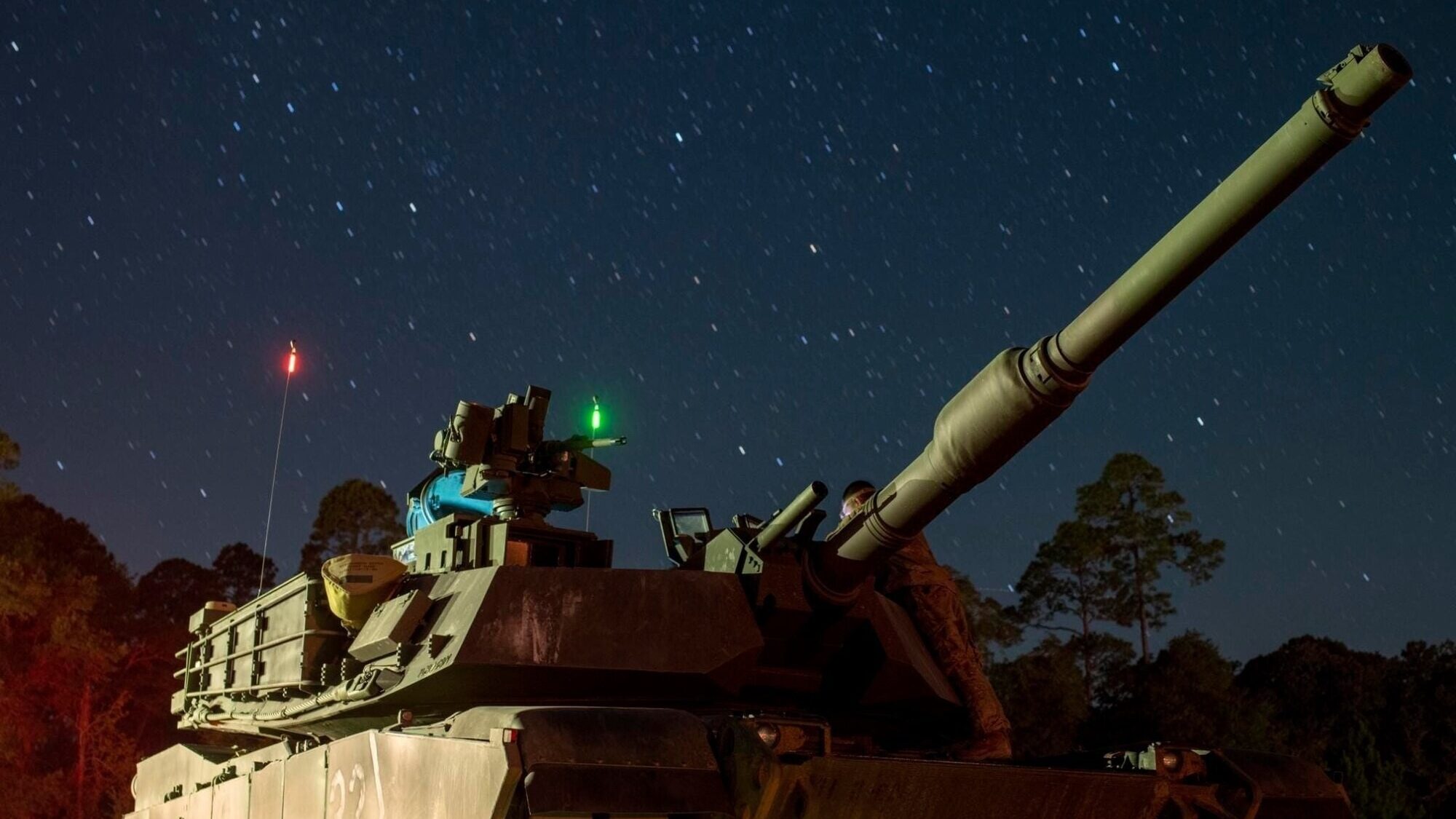
“Spartan Brigade” soldiers inside a M1A2 SEPv3 Abrams tank participate in new equipment training in September 2022. (US Army/1st Lt. Jacob Swinson)
WASHINGTON — The Army will pursue a more ambitious upgrade to its M1 Abrams main battle tank than previously planned — and could have soldiers inside it by early 2030, service officials announced today.
“The Abrams tank can no longer grow its capabilities without adding weight, and we need to reduce its logistical footprint,” said Maj. Gen. Glenn Dean, Program Executive Officer for Ground Combat Systems said in a press release. “The war in Ukraine has highlighted a critical need for integrated protections for soldiers, built from within instead of adding on.”
“We appreciate that future battlefields pose new challenges to the tank as we study recent and ongoing conflicts” wrote Brig. Gen. Geoffrey Norman, director of the Next-Generation Combat Vehicle Cross Functional Team. “We must optimize the Abrams’ mobility and survivability to allow the tank to continue to close with and destroy the enemy as the apex predator on future battlefields.”
General Dynamics Land Systems and the Army have been eyeing various paths ahead for the current tank fleet for several years. Existing plans called for an Abrams System Enhancement Package version 4 (SEPv4) but there was also consideration of a new overall design or more aggressive upgrade. Service leaders ultimately settled on closing out the SEPv4 program, giving the development announced today the title of M1E3 Abrams which will include improvements to sustain the fleet in 2040 and beyond.
As for the new path ahead, the service explained that the “E” designation represents an engineering change that is “more significant than a minor modification” and will serve as a designation for a prototype. Although the Army did not detail how that engineering change will play out, it noted that it plans to take the “best features” of the M1A2 SEPv4 and combine it with the latest modular open systems architecture standards. If done successfully, it will enable industry to quickly add in new technologies over time for “a more survivable, lighter tank.”
Last year, GDLS unveiled a lighter 59-ton Abrams X technology demonstrator to show the Army what an alternative path then the one it is on for the SEPv4. While that demonstrator will not be the final version the M1E3 takes, it did showcase options for a revamped tank — and likely ones the Army will consider with the final new design.
“[The Army has] been concerned about the weight class of the Abrams SEPv3… that is pushing 76 to 78 tons combat loaded,” Scott Taylor, the company’s director for US business development, told Breaking Defense during a March 21 interview. He noted that the new technologies for the SEPv4 will push that weight “slightly higher.”
“What 76 and 78 [ton] tanks do to the military is challenge its logistical supplies, its ability to get across bridging in many of the countries that we might be called upon to fight and, so, specifically [the] Abrams X was meant to stimulate the conversation about what the zone of the possible would be to lighten the tank, integrate hybrid-electric drive capability and technology to produce silent mobility and silent watch capability, substantially increasing the … lethality of that platform,” Taylor said.
Australia tops up Ukraine military aid with $100M
Australia has already supplied Ukraine with 120 Bushmaster vehicles, six 155mm howitzers, 56 M113 armored vehicles, 14 special operations vehicles and its signature cardboard drones.


























